A view of the natural world through the lens of USC photographers
As part of the USC Wrigley Institute for Environment and Sustainability’s Earth Month 2023 celebrations, we amplified the work of eight talented nature photographers from the USC community on our Instagram feed. From awe-inspiring moments captured below the ocean’s surface to chilling sights that depict the inextricable relationship between people and their environment, these photographs not only remind us of the beauty of life on our planet, but also the importance of efforts that help to protect it. See the photos and their stories below.

“On this particular winter day, the break wall in Monterey Bay had over 40-foot vis for 3 days straight – a very rare set of conditions. I had been shooting kelp bursts all day while the light exploded through the canopy above. I sat on the bottom of the sea floor with my camera set, waiting for a California Sea Lion to swim by. After five minutes, one curiously swam up to me and paused for a few seconds. I took three quick photos, and as quickly as he appeared, he was gone in the blink of an eye.”
Tyler Schiffman ’17 is an award-winning international photographer who has devoted his career to taking photographs and making films that will make a true impact in our world. While at USC, he majored in environmental science and health. To see more of his work, visit tylerschiffman.com.
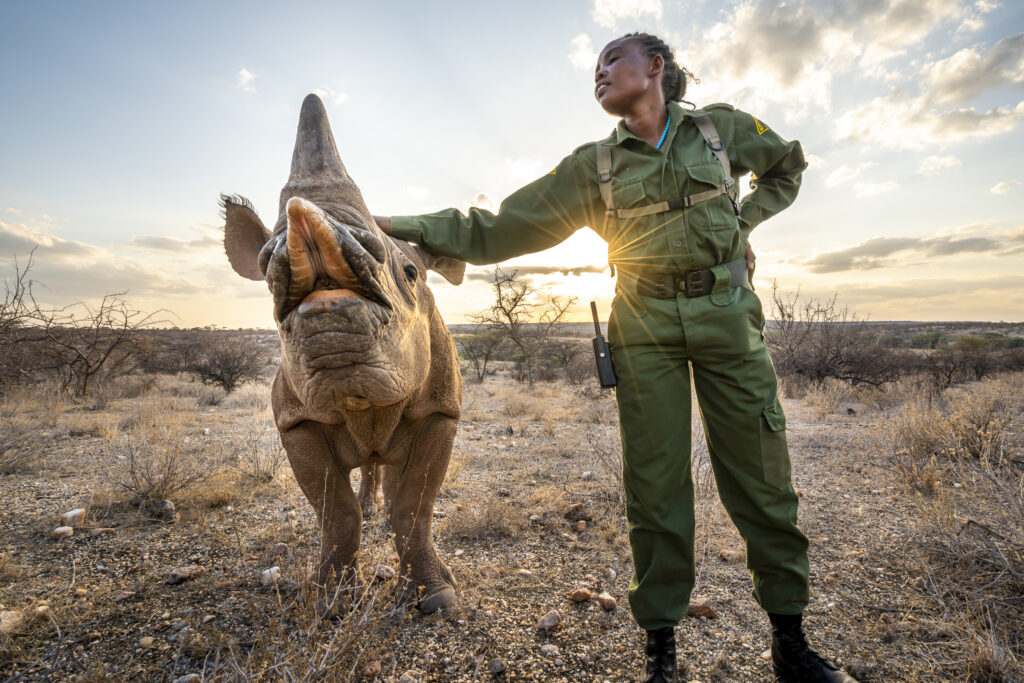
“While on an evening game-drive in the Sera Rhino Sanctuary, we saw Loijipu and Salome in the distance and headed their direction. As Loijipu walked around picking off the occasional green leaves from the rugged brush, Salome would follow him, uttering quiet Swahili words to the orphaned baby. As I saw the sun setting behind Salome, I framed it just beneath her shoulder, stopped down for the starburst, and waited for the composition to reveal itself. When Loijipu raised his head, flared his hooked upper lip, and Salome tilted her head back in an almost mimicked fashion, it all came together and I pressed the shutter. I knew I had a powerful image so I stopped taking additional images, and just enjoyed the moment.
In many areas in northern Kenya, Black Rhinos have gone extinct in the wild. This was the case in the Sera Conservancy but thanks to efforts by the Sera Rhino Sanctuary and the Northern Rangelands Trust, this fascinating, innocent species may soon be reintroduced to the wild.
This is Loijipu, a two-year-old black rhino orphan, and Salome, a ranger that looks after and cares for the baby rhino. Loijipu’s mother abandoned him at birth so rangers at the Sera Rhino Sanctuary have taken him in and are raising him until he is old enough to fend for himself. Salome is one of a handful of rangers that watches over Loijipu 24/7 to ensure the orphaned rhino is safe from poachers who may seek interest in his horn. The bond that has formed between rhino and ranger is incredibly powerful to see.
This image conveys hope that when enough dedicated, passionate individuals care about our world and the wildlife that we share it with, true positive change can take place. Among all the turmoil surrounding the environment, it is inspiring to see local communities come together with boots on the ground to protect wildlife and other endangered species.”
Davis Huber ’18 is a California-based filmmaker, photographer, and conservationist. Davis specializes in documentary filmmaking with a focus on conservation storytelling, underwater cinematography, natural history, and outdoor lifestyle branded content. While at USC, he majored in marine biology and environmental science and health. To see more of his work, visit davishuber.com.
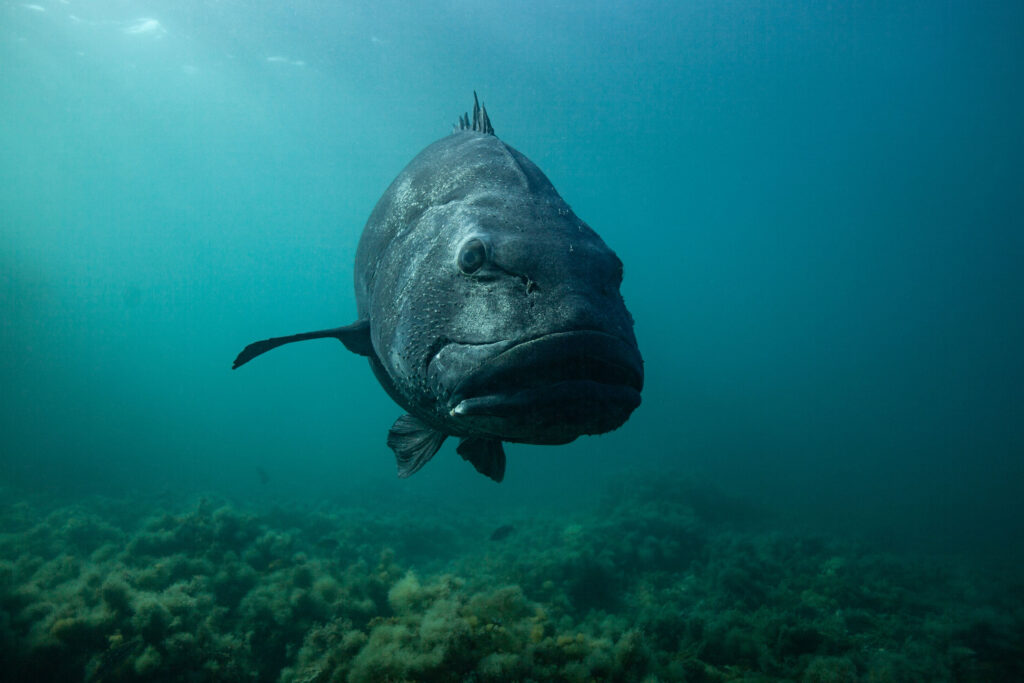
“Over the summer while working at the Wrigley Marine Center Center, I swam with a 500-pound giant sea bass for about 90 minutes. I dove with the gentle giant along the shore of Big Fisherman Cove, diving below, around and sometimes right at this massive fish. He never really seemed super bothered and always came back for another look, regardless of what I was doing with my camera. Once we swam back to the docks the sea bass ended the dive right where I started, going back into the open waters as I exited the water.”
Yannick Peterhans BA ’22, MA ’23 is an award-winning photojournalist with a passion for spot news and conservation storytelling. He is the senior photo desk editor at USC Annenberg Media and designated student photographer for USC Athletics. This spring, Peterhans is graduating with a master of arts in specialized journalism from USC Annenberg School for Communication and Journalism. To see more of his work, visit peterhansphotography.com.

“In June of 2021, I was riding a motorcycle east, from California through Texas, when I came upon a billboard advertising the ‘growing community’ of Dell City. It was 104 F (40℃) when I made the photo; a hot, uncomfortable, and thirsty 104 F. I found the landscape to be beautiful. And eerie. Eerie because, in spite of the billboard, I couldn’t see anything nearby that even resembled a city. On a lark I turned north and I found Dell City about 13 miles later. It turns out it’s a real place. Incorporated in 1948 after the discovery of an underground water supply by oil prospectors, Dell City attracted farmers to the area. But the community never took off. Its population in the 1950s was around 500. A few years ago, it was more like 350. And, year by year, that number is dropping. Visiting Dell City, I found the toughness of its residents to be surpassed only by the harshness of its environment and climate. And, in the end, it was that contrast which took me back to this billboard: In spite of promises made by people about opportunity and prosperity, nature will always have the final say.”
Joe Árvai is the Director of the Wrigley Institute for Environment and Sustainability; a professor of biological sciences and psychology at USC Dornsife College of Letters, Arts and Sciences; and a 2022 Wrigley Storymakers Program Fellow. His research focuses on how people form opinions and make decisions that have social and environmental consequences. Although primarily a researcher and professor, Árvai also leans into photography as a creative outlet and medium for storytelling. He aims to convey the emotions experienced by whoever and whatever lives in the places he photographs. To view more of his work, visit thatguyfromla.com.
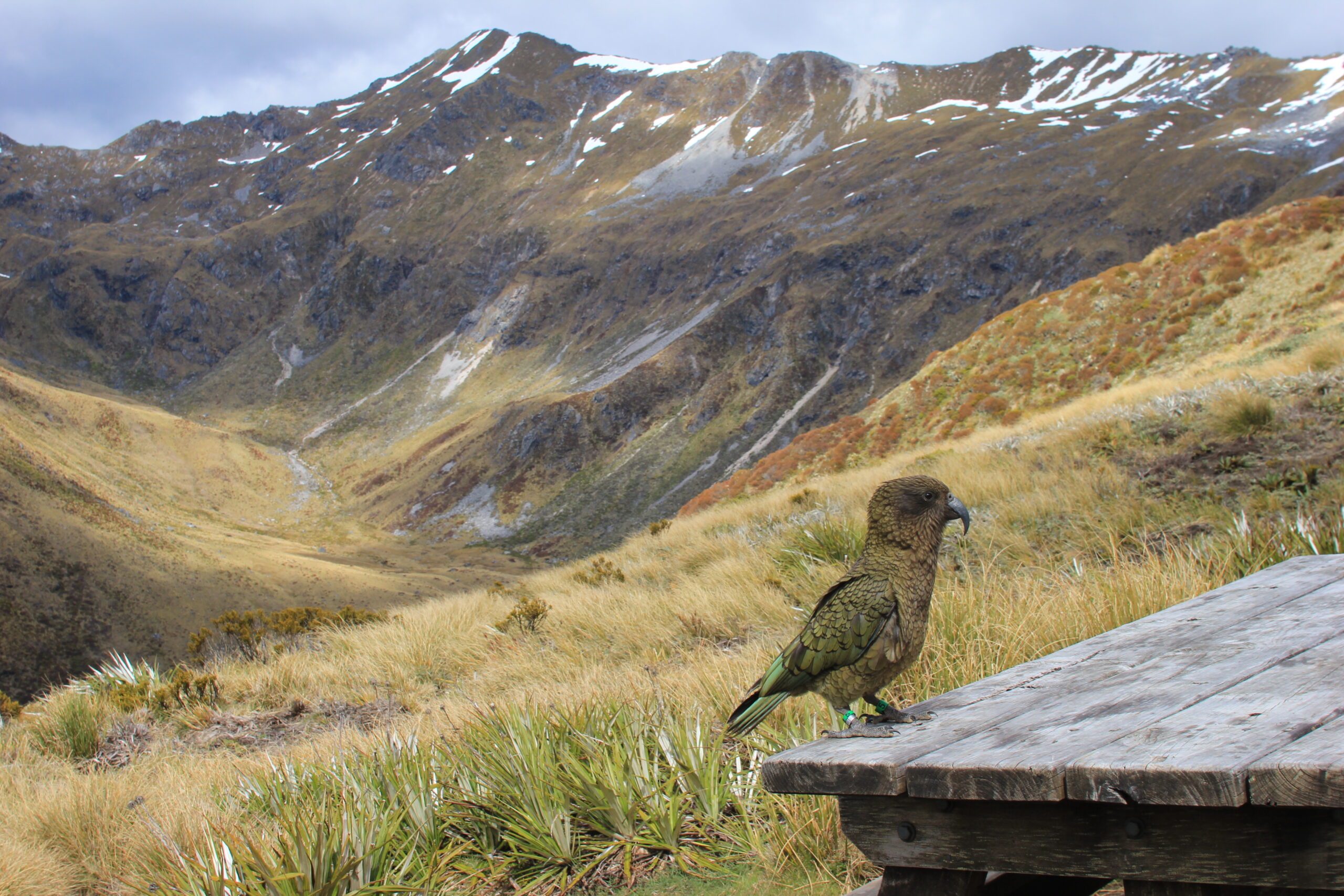
“I hiked the Kepler Track in November of 2022. Located in Fiordland National Park on the South Island of New Zealand, this was one of several of the Department of Conservation’s Great Walks that I completed during the seven months I lived there.
Over four days I hiked 60 kilometers (just over 37 miles), taking in a plethora of New Zealand’s best natural scenery — plunging glacial valleys, towering limestone bluffs, stark ridgelines coated in scrubby tussocks and patches of snow, ancient beech and podocarp forests, and native plants and birds (especially the inquisitive kea, the world’s only alpine parrot!).
I documented my adventure in an article for the country’s leading conservation magazine, Forest & Bird, in the hopes that my words and photos will inspire others to experience the track for themselves!”
Montana Denton ’22 holds a bachelor’s degree in environmental studies from USC and plans to return this summer to begin coursework for her master of arts in specialized journalism from USC Annenberg School for Communication and Journalism, focusing on climate issues. To view more of her work, visit montanadenton.com.
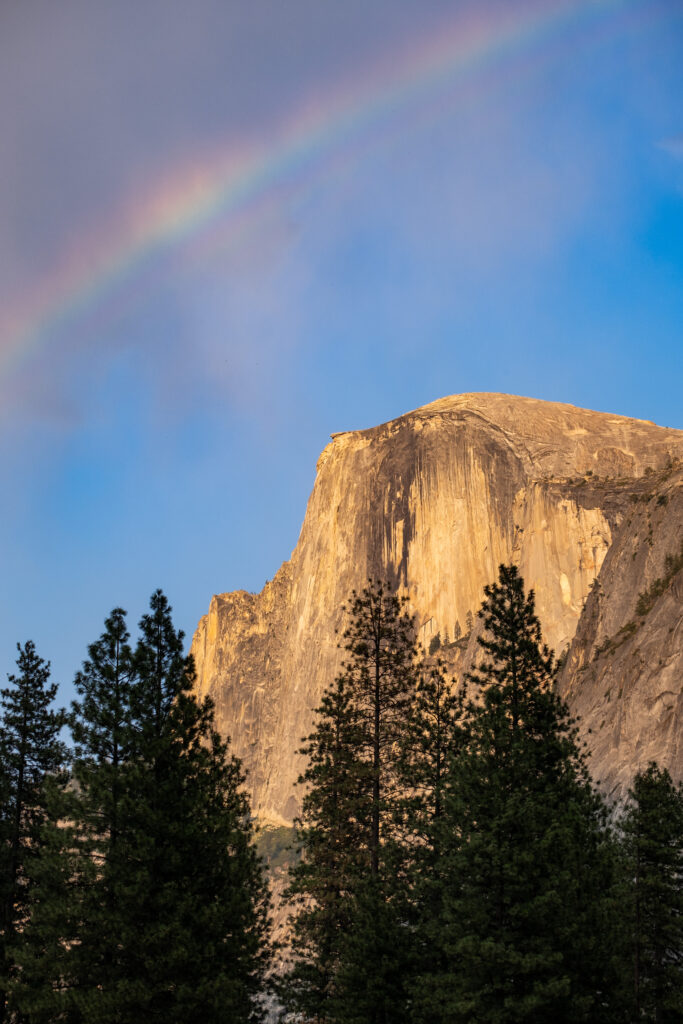
“We visited Yosemite Valley on our week-long trip to nine California National Parks in August 2022. Our trip lined up with the peak of the heatwave, and we were forced to reflect on the state of our climate as we passed through numerous burn scares across the state. While we were in Yosemite, the valley was consumed by the thick smoke of a nearby wildfire, a smell we’re all too familiar with; the rainbow visible in this image is being cast over the smoke. Observing beauty in the midst of a natural disaster felt simultaneously jarring and grounding. However, it has allowed us to continue dialogue about the future of our natural spaces and our place in them.”
Marcela Riddick ’22 (who is also the Wrigley Institute Engagement Coordinator!) and Stevie Gray ’22are the co-founders of riddick & gray, a consultancy specializing in impact-centered media projects, start-up social enterprises, and sustainable concept design. Riddick holds an MS in social entrepreneurship from USC Marshall School of Business and Gray holds a BA in film and television from USC School of Cinematic Arts. To see more of their work, visit riddickandgray.com.
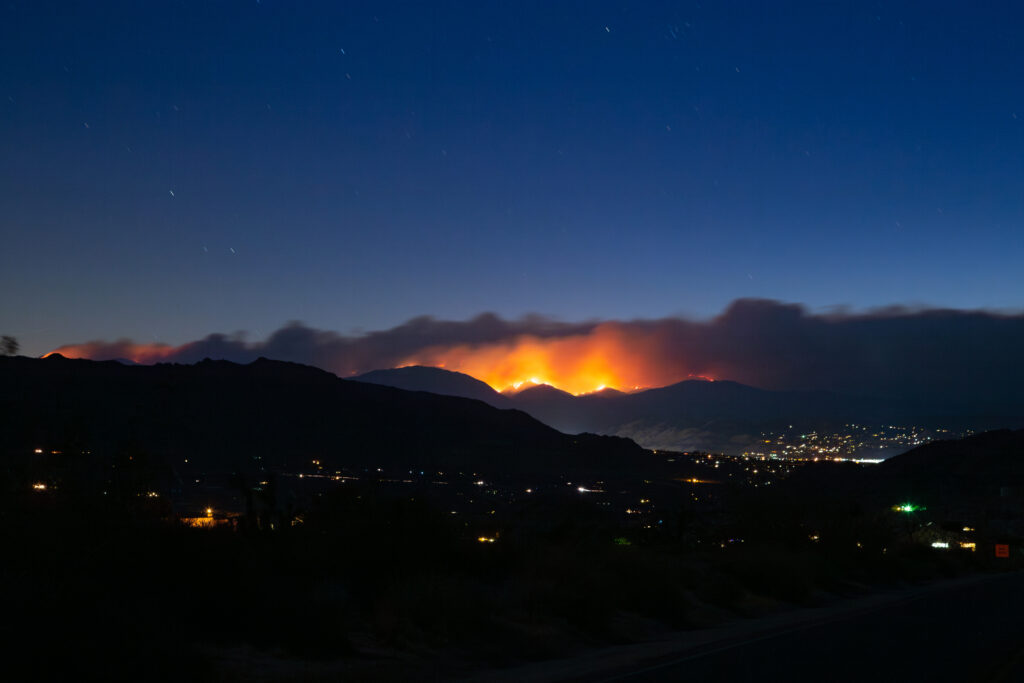
“In the spring of 2015, just days after graduating from college in Rochester, NY (my hometown), I decided to take a leap and drive across the US with a couple of friends with no route, timeline, or solid plan in mind. For several months, we drove from state to state, national park to national park, taking in the diverse beauty this country has to offer. My final destination ended up being Southern California. Little did I know, this impromptu adventure would lead me to starting a new life in California, where I have been residing ever since. The last picture in the series was taken on my very first night in California. Throughout the day, the horizon was lined with beautiful clouds with hints of green and pink. It wasn’t until the sun set that I realized they weren’t clouds at all. Even from 40 miles away, you understood the wildfire’s power.”
Nick Neumann has a strong passion for outdoor exploration, storytelling, and environmental conservation. Nick is always looking for a great story with visual appeal, so if you’re in the Wrigley universe and have a lead, feel free to shoot him an email at nickneum@usc.edu.
